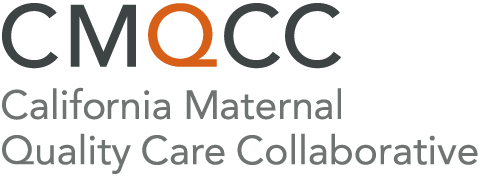During the last week of her first pregnancy in 2019, Ashley Barbee Eddington, MPH, had noticed her legs were more swollen than usual, and not just her feet and ankles, even her thighs were puffier. She remembers thinking: “Wow, this is what the end of pregnancy feels like.”
At her final prenatal appointment, her blood pressure was elevated and labs revealed protein in her urine. Ashley was told she was experiencing preeclampsia and HELLP (Hemolysis, Elevated Liver enzymes, Low Platelet count) syndrome, which can present as a complication of severe preeclampsia. She was sent straight to labor and delivery for evaluation.
Ashley knew the staggering disparities non-Hispanic Black mothers face in the United States – that they are nearly three times more likely to die during childbirth compared to non-Hispanic White women – and she wanted her care team to affirm they too were aware and her concerns to be reflected in her chart. Many members of her family rallied together at the hospital to serve as her advocate.
Though she required a blood transfusion during birth, Ashley delivered a healthy baby girl on her due date. She says she’s grateful preeclampsia presented only at the end of her pregnancy, because while preeclampsia can be managed with medications, it cannot resolve until after the birth of the baby.
While she was able to take her baby home with her from the hospital, Ashley still felt anxious postpartum about her own health. Surveillance and vigilance is critical in the postpartum period. Preeclampsia can persist and worsen postpartum, and postpartum preeclampsia can emerge days or weeks after delivery, even in those who did not experience hypertension during pregnancy. Ashley went to the emergency room a few days after she was discharged due to pain she was experiencing in her legs, fearing a blood clot.
When she thinks back on her pregnancy today, Ashley recalls her doctors mentioning protein in her urine at earlier prenatal appointments. Yet they never discussed it further with her.
“I think that was a gap and a moment of education, preparation, and caution that I could have had,” she says. “Doctors should share information from lab results and examinations with their patients, explain what was found, what it means, and how to self-assess going forward. A sudden increase in swelling was a sign for preeclampsia I probably didn’t know about, and if I could have connected two or three symptoms, I probably would have gone to the doctor sooner.”
Wanting to improve communication and trust between patients and providers is part of why Ashley became involved in the Low-Dose Aspirin Quality Improvement Initiative led by the California Maternal Quality Care Collaborative (CMQCC) and funded by the March of Dimes.
Preeclampsia is one of the most serious pregnancy complications, impacting about 4% of pregnancies and contributing to 6% of preterm births in the US. The CMQCC Low-Dose Aspirin Initiative aims to reduce the incidence of preeclampsia and subsequent preterm birth by promoting and measuring the use of low-dose aspirin during pregnancy at several pilot hospitals in the state. In the coming years, CMQCC leadership hopes to expand the initiative across California and nationwide.
Low-dose aspirin to prevent preeclampsia is a relatively recent intervention
Amanda Williams, MD, MPH, CMQCC Medical Lead for the initiative, cites low-dose aspirin for preeclampsia and preterm birth prevention as the most important development in obstetrics and gynecology that she has experienced in her career to date. Basic science researchers haven’t yet identified how exactly low-dose aspirin impacts the blood vessels of the placenta, as the drug’s clinical application in the maternal health space is still relatively new.
In 2004, during her residency in obstetrics at the University of California San Francisco, Dr. Williams was diagnosed with preeclampsia at 35 weeks into her pregnancy. She says she wishes she knew then about low-dose aspirin. It wasn’t until 2014 that the United States Preventive Services Task Force released a formal recommendation for aspirin use (81 mg/d) to prevent preeclampsia, and it has been widely, albeit inconsistently, adopted.
Nearly two decades have passed since Dr. Williams delivered preterm and her baby spent 10 days in the neonatal intensive care unit as a result of preeclampsia. She now has chronic hypertension – a condition which women with preeclampsia are at increased risk for developing later in life.
Dr. Williams’ personal experience strengthens her commitment to advocate for preeclampsia education and prevention, especially for birthing people of color. To this end, the CMQCC Low-Dose Aspirin Initiative engages a variety of stakeholders including prenatal and perinatal clinicians and staff, community partners, and, critically, other individuals who have lived experience as patients with preeclampsia.
New approach centers on patients
Many publicly-funded maternal health research projects promoting the use of low-dose aspirin have been directed toward clinicians without seeking patient engagement, Dr. Williams explains. “What’s really different about this approach is that we are starting with patients. This is absolutely necessary if we are going to do actual behavioral change,” she says.
Because low-dose aspirin is a daily intervention that needs to be maintained throughout the course of pregnancy, there are many opportunities for patients to decide not to take it. Some mothers don’t know why they’re being put on the medication, while others may assume low-dose aspirin will harm their baby due to the labeling on over-the-counter bottles. What’s more, preeclampsia disproportionately impacts non-Hispanic Black women in the US – a population who already has a well-deserved distrust in the medical system.
When Ashley became pregnant with her second child in 2021, she met with her care team wanting to know how to prevent what happened in her first birth from happening again. Prior to her first pregnancy, Ashley had never heard of HELLP syndrome and had assumed that preeclampsia may be related to a mother’s weight. “During a physician consult, I was assured – and I think this helped me psychologically – it’s nothing that I did or didn’t do for why I got it. Anybody big or small could have high blood pressure,” she says.
Together, Ashley and her care team decided to pursue a low-dose aspirin regimen, from 12-35 weeks. Wanting to actively participate in her own care, Ashley got a home blood pressure monitor and logged her levels periodically. She did not experience high blood pressure at any time throughout her pregnancy, and delivered another healthy baby girl at full term.
Ashley is one of about a dozen members on the Patient Advisory Committee for the CMQCC Low-Dose Aspirin Initiative. The committee meets online once a month to share their experiences with preeclampsia and provide feedback on the initiative’s efforts.
At a recent meeting, CMQCC Lead for Community Engagement, Lindsay du Plessis, DrPH, MPH, shared a flier with members that presented the risk factors and warning signs for preeclampsia in text and graphics. “We designed our patient education materials to help patients guide discussions about preeclampsia with their health care provider, empowering them to advocate for themselves and their baby,” Dr. du Plessis says. “If you’re at risk for preeclampsia and you’re on low-dose aspirin, that will not only help you, but your baby too.”
Patient Advisory Committee members discussed making the flier into a refrigerator magnet, or printing a QR code on a keychain card to enable access to a digital version by smartphone. Group consensus was the flier’s information gave moms tools for agency – action words that they could bring to their providers to alert them of possible preeclampsia.
As Ashley explains, “If you at least know what questions to ask, know what could happen to your body, and you feel like your medical care team trusts you as the patient and is not holding anything back, I think you could journey through 9 months in a good head space to literally push through the other side.”
###
BY: LAURA HEDLI

Laura Hedli is a science writer for the Division of Neonatal and Developmental Medicine at Stanford University School of Medicine. You can reach her at lhedli@stanford.edu.
